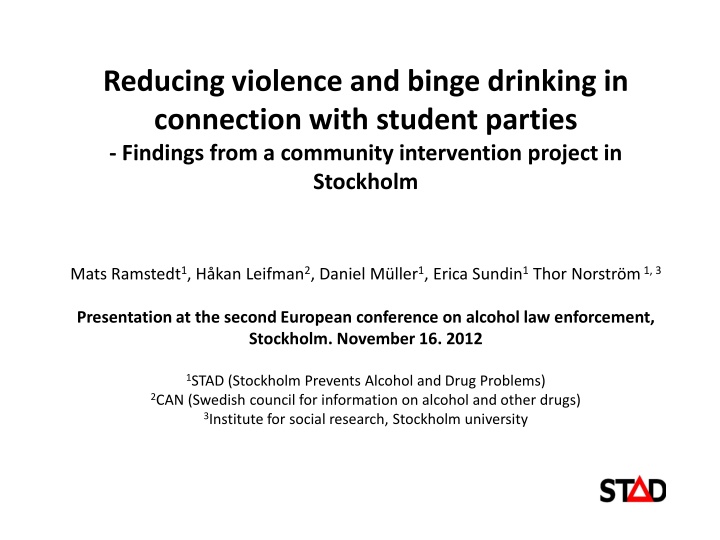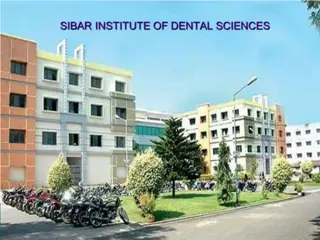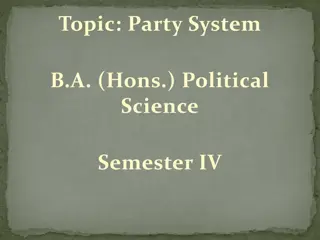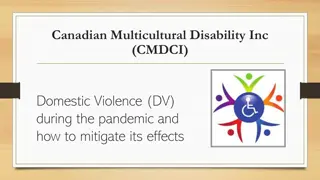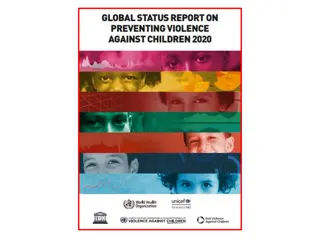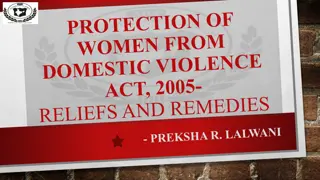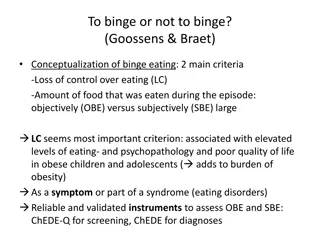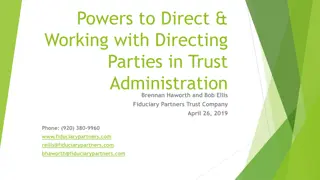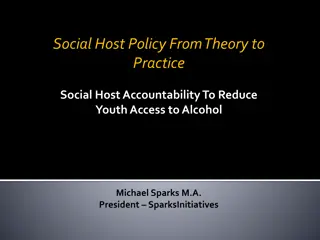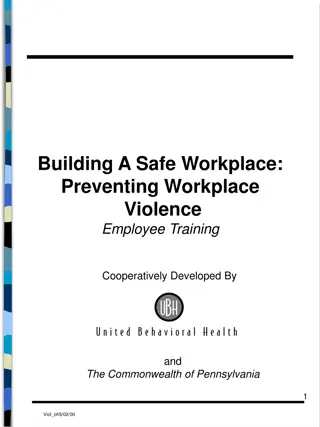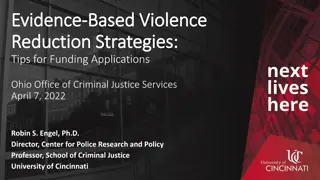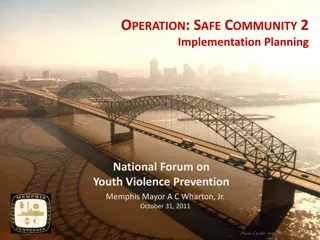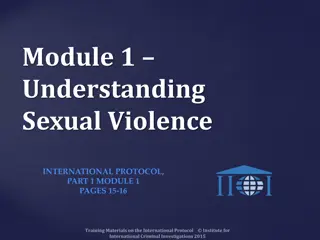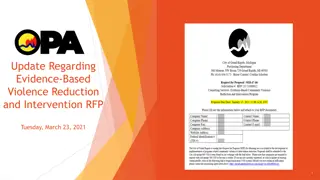Community Intervention Project in Stockholm to Reduce Violence and Binge Drinking at Student Parties
High-school student parties in Stockholm led to increased violence and binge drinking. In response, a community intervention project was launched in 2008, involving the police, liquor license board, tax authorities, event companies, restaurants, and STAD. The aim was to evaluate the impact of these interventions on reducing violence and binge drinking at student parties. Data on violence-related emergency room visits during student party nights and non-party nights were analyzed. The study assessed the effectiveness of the interventions in curbing violence and binge drinking at these events.
Download Presentation

Please find below an Image/Link to download the presentation.
The content on the website is provided AS IS for your information and personal use only. It may not be sold, licensed, or shared on other websites without obtaining consent from the author.If you encounter any issues during the download, it is possible that the publisher has removed the file from their server.
You are allowed to download the files provided on this website for personal or commercial use, subject to the condition that they are used lawfully. All files are the property of their respective owners.
The content on the website is provided AS IS for your information and personal use only. It may not be sold, licensed, or shared on other websites without obtaining consent from the author.
E N D
Presentation Transcript
Reducing violence and binge drinking in connection with student parties - Findings from a community intervention project in Stockholm Mats Ramstedt1, H kan Leifman2, Daniel M ller1, Erica Sundin1Thor Norstr m1, 3 Presentation at the second European conference on alcohol law enforcement, Stockholm. November 16. 2012 1STAD (Stockholm Prevents Alcohol and Drug Problems) 2CAN (Swedish council for information on alcohol and other drugs) 3Institute for social research, Stockholm university
Background It has become popular for high-school students in Stockholm to arrange their student parties at restaurants in the city, often with help from Eventbolag Spring of 2007: the police noticed a striking increase in violence and binge drinking in connection with these parties A community intervention inspired by the RBS-program was developed and launched in the spring of 2008 including supervision, collaboration and education involving several actors
Actors involved in the intervention Police: Created a special student unit working only with this intervention , visit all parties at least twice, are available and possible to reach during the whole evening. The liquor license board: extended supervision on restaurants having student parties. Tax authorities: special control of the financial accounts of event companies/restaurants if needed.
Other actors involved Event companies: agreed to follow specific guidelines e.g. to report all parties to the police and to attend information meetings. Restaurants: agreed to ensure safety in restaurants, to work with RBS, to collaborate with local police etc. STAD: served as link between Event companies and restaurants and authorities and disseminated information to students etc.
Aim of the study The present study aims at evaluating the impact of these interventions by assessing whether violence and binge drinking were reduced in relation to the students parties.
Data 1. Indicator of violence related to student parties: Violence-related emergency room visits on weekday nights (22.00- 06.00) during the period 1 April 31 May i.e. when the majority of student parties takes place. 2. Indicator of violence not related to student parties : Violence-related emergency room visits on weekend nights (22.00- 06.00) during the period 1 April 31 May i.e. when no student parties takes place.
Hypotheses: 1. Decline on weekday nights after 2008 (due to intervention) but not on weekend nights (no intervention) during the period with student parties i.e. April-May 2. No difference expected between development on weekday and weekend nights during periods without student parties (and thus no intervention) i.e. Jan- March and June-Sept
Results Emergency room visits (18-20 yrs) in weekday nights (red line) and weekend nights (blue line) Student period i.e. april-may
Emergency room visits (18-20 yrs) weekday nights (red line) and weekend nights (blue line). Not student party period (Jan March)
Emergency room visits (18-20 yrs) weekday nights (red line) and weekend nights (blue line). Not student party period (June Sept.)
Statistical analysis The intervention effect was assessed by means of a difference-in-differences estimation (DiD) DiD is a technique often used by economists when evaluating policy changes that have been implemented in a quasi-experimental fashion In short: has the difference in emergency room visits between weekdays and weekends become significantly larger after the intervention and how much?
Findings The estimated DiD-models confirm the impression of this graphical evidence. The estimated intervention effect corresponded to a reduction of 23% in emergency room visits on weekday nights and was statistically significant. In contrast, the estimated intervention effects in jan-march and june-sept were non-significant.
Estimated means of BAC-levels among boys and girls (18- 20 yrs) attending student parties according to random breath tests. . 2009 2010 2011 2012 2008 Women 0,71 0,66 0,58 0,65 0,56 Men 0,81 0,77 0,63 0,73 0,67 Total 0,76 0,72 0,61 0,70 0,62
Summary The main finding suggest that the intervention was associated a reduction in violence in terms of a reduction in emergency room visits for young people with 23 %. In contrast, no significant intervention effects were found in during periods before and after periods with student parties i.e. when no intervention was made. Binge drinking among students were reduced during follow-up.
Limitations The number of data points is on the low side The number of violence-related emergency room visits actually related to student parties are not known BAC-levels at student parties were only measured when the intervention had started and it was thus not possible to estimate an effect of the intervention.
Conclusion The evaluation suggests that this type of intervention is a promising measure for preventing violence that is worthy to be continued. This would also provide additional data that are needed for a more conclusive assessment.
For more information: See http://08student.se/ Or contact: STAD: daniel.muller@sll.se erica.sundin@sll.se Police: student.stockholm@polisen.se
